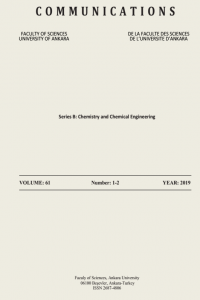Infrared Evidence for the Structure of Cobalt (11) Tartrate Triiıydrate
Infrared Evidence for the Structure of Cobalt (11) Tartrate Triiıydrate
The stereochemistry of the d7-ion, Co2+, has proved much more difficult to interpret than that of the d6-ion, Co3+. It is only during the last few years that a deeper understanding of magne- tic properties and absorption spectra has made it possible to make reliable assignments of stereochemistry to cobalt (11) compounds without X-ray analysis [2 ]. Five different structures of divalent metal tartrate comple- xes M+2, (where M = Co and Cü) in the solid State are proposed. Only one of these proposed structures agrees with the infrared studies of the Co (11) and Cu (11) tartarates trihydrate. A diffe¬rent structure is shown for the Ni (11) compound. The structure of the first row transition metals tartrate has been the subject of interest for many years [3—7]. There has been a difference of opi- nion [8, 5] as to the way of bonding of the tartrate anion to that of the transition metal cation. Several methods have been used in the study of such compounds in order to verify their structure, namely conductometric, spectrophotometric, potentiometric, and polarographic methods [5], as well as polarimetric and crys- talization procedure [7]. There are six principal proposed struc- tures which describe the bonding of the tartrate ion in metal tart- rate complexes. The first proposed structure [9 & 2 ] that a me¬tal ion can be coordinated to the tartrate anion through the oxy- gens of the two carboxylate groups.
Keywords:
The stereochemistry, Infrared Evidence Tartrate Triiıydrate,
___
- Communications Faculty of Sciences University of Ankara Series B Chemistry and Chemical Engineering
- ISSN: 1303-6017
- Başlangıç: 1948
- Yayıncı: Ankara Üniversitesi
